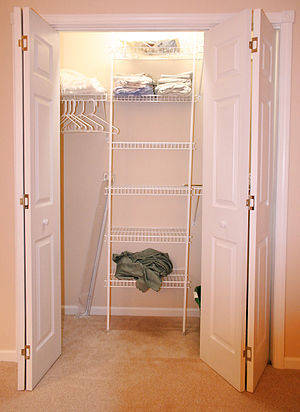Do you have a room in your home that seems to be the one room everyone avoids? Does it seem to feel uncomfortable or have a confused purpose? Well we all have these types of rooms. There are any number of reasons as to why a room in your home may be the one that gets avoided, under utilized and wasted as a great space. There are a number of reasons this may be. Lets look at a few:
Space is undefined: All rooms need an identity. Try to figure out what space you'd like to add to your home and use that as an initial inspiration. Do you need a home office? Craft/sewing room, library? Spare bedroom? Try to give the room a purpose that is really needed, it may be an inexpensive idea or more costly, but it should always address a key need you have in your home. Otherwise it will still be the "room no one goes into.." which is still a waste.
Space is too small or too large: Small spaces can always find a use if you examine first what your needs are. Many people will use small spaces as a place to simply create a "nook" for reading, sewing, meditating or convert into a closet. Spaces that are too large can be divided up into smaller spaces via a room divider or have a half wall built to separate the spaces. This way you can focus on creating two separate spaces individually. Because the spaces are close together you may want to consider spaces that will work well in close proximity to each other. Perhaps a media room/game room?
Space is odd shaped or has little available wall space: Odd spaced rooms can be a real challenge but the first step is to try and treat the space like it is symmetrical. I know that may be hard to do, but you can read this article : Designing and decorating odd shaped rooms to get more information on this subject. Limited wall space is always a problem but you may want to create a faux wall where there is none and there are many ways to do this. You can build or add a shelving unit or use screens to make a faux wall as well to work off of. You can also suspend long drapes from the ceiling that can be opened and closed as needed where a wall is desired.
Space is too cold, too dark, too hot or too bright: All of these problems can be addressed with a few key strategies, for instances, cold rooms may need an additional heat source. Consider an attractive electric fireplace, which can provide not only heat but a focal point. Try to find units that have additional storage. Also consider where the cold feeling is coming from. Is there a draft? Are there windows that are in poor shape? Is the room really cold or does it feel cold because of the design and decor? Likewise, you'll want to ask yourself similar questions for a room that is too light and too warm. Rooms that are both too bright and too warm usually suggest that there are many windows and not enough air flow. Again consider adding an additional supply of cool air via an air conditioner. You can also tone down the brightness using black out curtains, installing shades or exterior awnings for the windows. Cool down the room visually by adding "cool" neutrals like gray or taupe or with blues and pastels. Go easy on the pastels mind you, or you'll have an 80's look. Pastels will work fine if you keep the trim in the room either bright white or very dark and remember to outfit the room in modern, contemporary furnishings.
Read more here on The Unused Spaces to Your Home.

